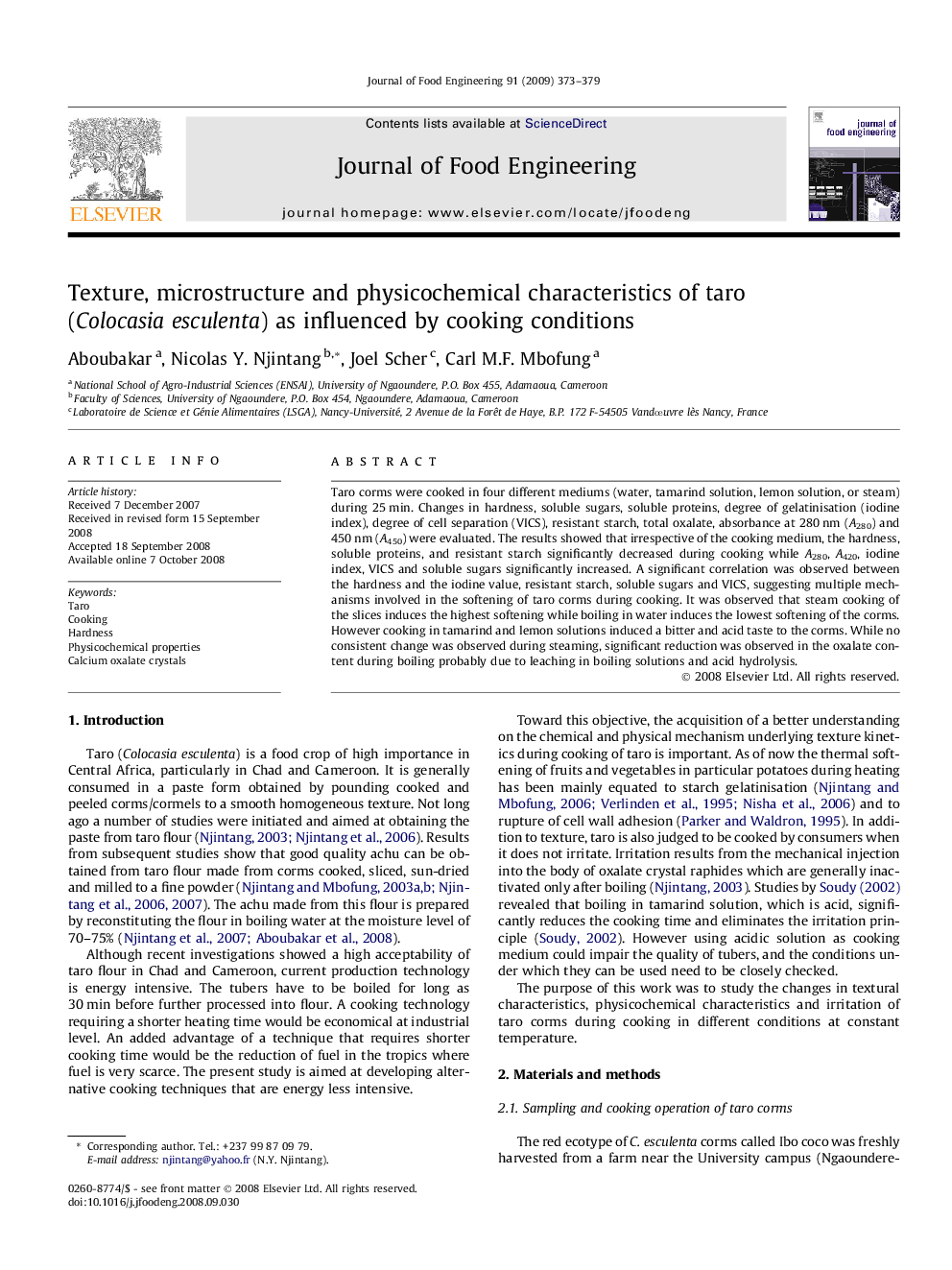| Article ID | Journal | Published Year | Pages | File Type |
|---|---|---|---|---|
| 225005 | Journal of Food Engineering | 2009 | 7 Pages |
Taro corms were cooked in four different mediums (water, tamarind solution, lemon solution, or steam) during 25 min. Changes in hardness, soluble sugars, soluble proteins, degree of gelatinisation (iodine index), degree of cell separation (VICS), resistant starch, total oxalate, absorbance at 280 nm (A280) and 450 nm (A450) were evaluated. The results showed that irrespective of the cooking medium, the hardness, soluble proteins, and resistant starch significantly decreased during cooking while A280, A420, iodine index, VICS and soluble sugars significantly increased. A significant correlation was observed between the hardness and the iodine value, resistant starch, soluble sugars and VICS, suggesting multiple mechanisms involved in the softening of taro corms during cooking. It was observed that steam cooking of the slices induces the highest softening while boiling in water induces the lowest softening of the corms. However cooking in tamarind and lemon solutions induced a bitter and acid taste to the corms. While no consistent change was observed during steaming, significant reduction was observed in the oxalate content during boiling probably due to leaching in boiling solutions and acid hydrolysis.
